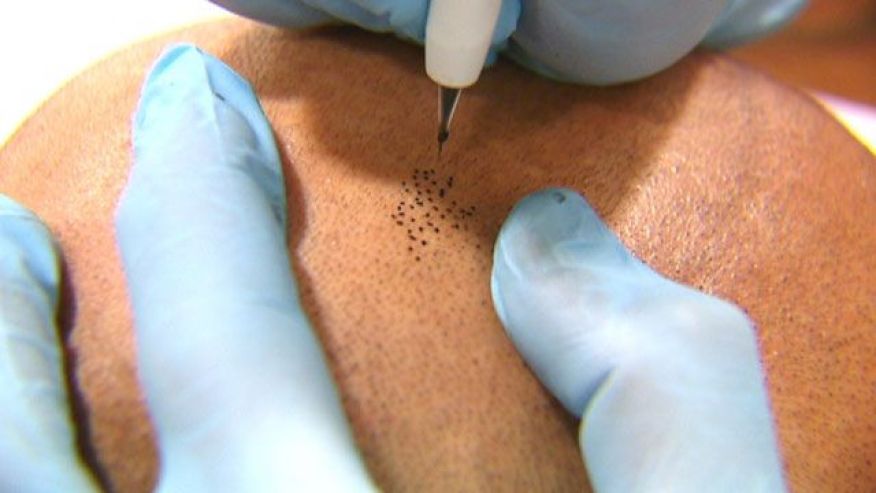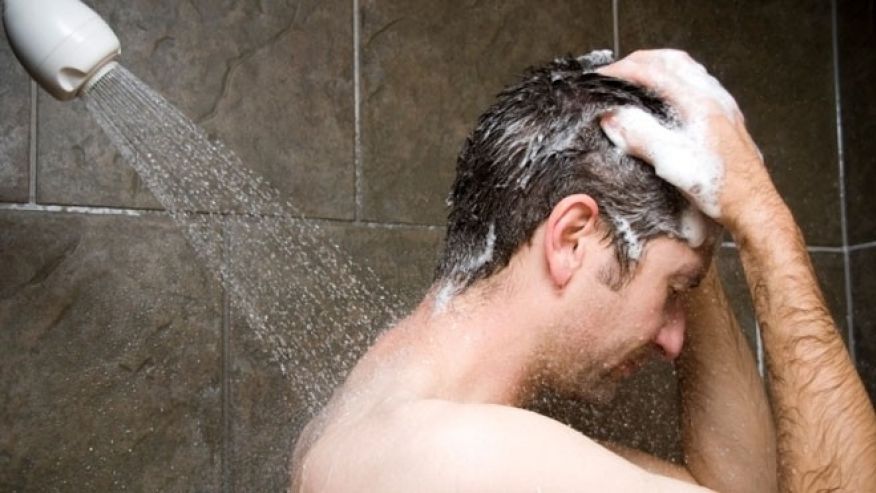
When you’re wearing a puffy jacket, fuzzy earmuffs, and a Lenny Kravitz-sized scarf—the last thing on your mind is sunscreen. We get it. Priority number one is staying warm and keeping your skin moisturised. But cooler temps can trick you into thinking that SPF is only a concern from April-August. After all, can the sun really do that much damage when your skin is barely showing? “Even low level sun exposure adds up over a lifetime,” says Dr. Joshua Zeichner, the Director of Cosmetic and Clinical Research at Mount Sinai Hospital’s Department of Dermatology in New York City. “You certainly can develop UV-related sun damage in the winter.” Here are all the sneaky reasons why you should slather sunscreen on year-round.
1. Don’t forget about UVA radiation
The chances of getting a blistering sunburn in the middle of winter are slim, there’s no denying that. But sunburns are caused by UVB radiation, and we allknow that it’s not the only wavelength in the game. We do know that, right? If not, here’s a refresher: the sun’s radiation reaches us here on Earth in the form of UVA and UVB rays. UVA rays account for up to 95% of the UV radiation reaching the Earth’s surface, according to the Skin Cancer Foundation. It’s UVB radiation that gets all the attention for causing sunburns, but UVA radiation is harmful, too. Since the rays penetrate deep into the skin, exposure causes photoageing and the DNA damage that can lead to aggressive basal and squamous cell carcinoma skin cancers.
The worst part about UVA? Well, there’s several. “UVA light penetrates through window glass,” says Zeichner. “So you’re being exposed if you’re at the gym, in your car, or in an airplane at 10,000 feet, when you’re closer to the sun. Even just at home sitting by the window.”
Clouds, snow, and fog have little impact on whether or not UVA and UVB rays are reaching your skin. “Therefore, even on an overcast day, sunburns and sun damage happen,” says Dr. Melissa K. Levin, a dermatologist in New York City. “Keep in mind that five or more sunburns doubles your risk of melanoma. Sun damage which causes skin cancer is cumulative even during winter months.” Combine that with the fact that up until 2011, the Food and Drug Administration didn’t even have a test to gauge how well sunscreens protected against UVA radiation (if your sunscreen isn’t labeled broad-spectrum, then it doesn’t.)
The solution to protecting your skin is the obvious one: wear a broad-spectrum sunscreen that has at least SPF 30 every single day. If you’re outside for more than a few hours, you should reapply it to any skin that’s showing—like your face, hands, ears, and chest. If you’re rolling your eyes at the thought of adding one more step to your beauty routine, then take the easy route and find a moisturiser that does double duty. Just make sure you smear it all over your face to get the full SPF value.
2. You’re using over-the-counter medications or creams
There are literally hundreds of medications, creams, and treatments that can make your skin photosensitive—or more likely to become damaged in the sun. There are the obvious ones like retinol and at-home or in-clinic chemical peels—but even antibiotics can increase your chance of sunburn. “If you get an upper respiratory infection or bronchitis and are given an antibiotic—that may increase your risk of a burn,” says Zeichner, mentioning Cipro and Doxycycline as two common examples. High blood pressure medication and anti-inflammatory drugs are also a culprit. You can Google if your medication or the ingredients in your skincare cause photosensitivity—but regardless, just wear some sunscreen.
3. UV rays bounce and reflect
Fresh snow can nearly double your amount of UV exposure, since it’s a particularly good reflective surface. But did you know that your phone or tablet can have a similar impact, albeit on a smaller scale? One study even found an iPhone can increase your UV exposure by as much as 36%, simply by bouncing rays back on your face. Even mirrored aviator sunglasses have been shown to cause damage on your cheeks. Anytime you’re around a reflective surface, your exposure to UV light increases, and so does your risk of skin cancer and photoageing.
4. You skin barrier is weakened
You know how your skin feels dry from head-to-toe the second the weather dips below ten degrees? Consider that a warning sign that your skin’s defences are down, making it more susceptible to environmental aggressors and sun damage. “Cold, dry weather compromises skin barrier function,” says Zeichner. “One of the functions of the stratum corneum is to provide UV protection and antioxidant protection.” You should also resist the urge to slough off dead skin with any scrubby thing you can get your further leave your skin prone to damage. You can treat dry skin while simultaneously protecting it by simply choosing a thick, ceramide-rich moisturiser formula with SPF included.
5. You’re way, way up
If you’re hitting the slopes (or just drinking hot chocolate on a snowy mountain top somewhere)—you’re being exposed to more UV radiation. “For example, direct UVB levels in Vail, Colorado is about 60% than at sea level,” says Levin. “It’s estimated that UV exposure increases by four to ten percent for every 1,000 feet above sea level.” Be sure to apply a broad-spectrum sunscreen to areas your ski gear might not be covering properly (like your ears, eyes, lips, or neck.) At the very least, slip an SPF lip balm in your coat pocket. We like Aquaphor Lip Repair + Protect, Broad Spectrum SPF 30, £8.40.
[“source=netdoctor”]





















